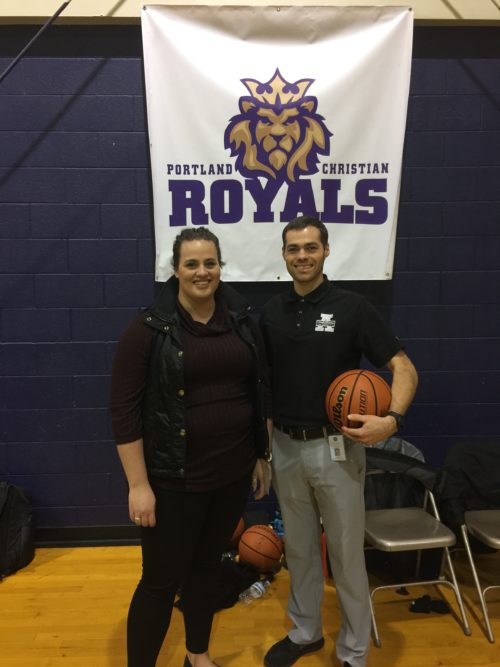“You see it, do it and teach it to master it,” said Jun Kawaguchi, DC, ATC, assistant professor in the sports medicine program. “This concept applies to the experience our students get in the Master of Science in sports medicine program at University of Western States (UWS). They see their supervisors do certain things, then they do those tasks many times to become proficient at them. Once the students reach their upper quarters, they teach the junior students, which further helps them in their understanding. My hope is that our graduates will have enough experience in a wide variety of skills and situations that they feel comfortable ‘flying solo’ as sports clinicians from day one.”
The sports medicine program at UWS allows chiropractic students, chiropractic physicians and other practicing healthcare professionals to tailor their focus toward the evaluation, treatment, management and rehabilitation of injured athletes and optimizing the performance of athletes at any level.

Hands-on training is an emphasis of the program. Students work with local sports teams and multi-level athletes, training on location for their practicum experience at local high schools.
David Douglas High School and Parkrose High School are two of the practicum sites UWS where students provide services to the student athletes.
“The involvement from our students at local high schools is the culmination of the UWS motto – ‘For the Good of the Patient.’ Students are able to work with local student athletes who otherwise would not have access to such high-quality sports medicine care. These high school students are largely underserved by the traditional medical community and few have a relationship with any health care providers,” said Brent Marshall, MS, ATC, assistant professor at UWS. “The UWS faculty and students are often the first medical professionals that the students see for their injuries and other sports-related medical conditions. This allows the UWS faculty and students to intervene for the betterment of the health of the patients we serve, leading to life-long physical well-being and health.”
Under supervision, UWS students perform evaluation and treatment of athletic injuries, provide taping services, educate on sports injuries, perform concussion evaluation and management, and provide emergency care for athletes during practices and events.
“The hands-on experience at the high schools is the practical application of everything we learn here at UWS,” said Chantelle Green, a student in the sports medicine program. “Teenagers are a unique population. Communicating and building relationships with them makes us better clinicians. On top of that, working at the high schools forces us to be on our game regarding conditions and treatments, because you never know what condition you’re going to encounter next.”
Students spend 33 hours per quarter at local schools and outreach events within the sports medicine program and many students often choose to work more hours.
Annually, the UWS sports medicine program provides care and treatment to more than 1,500 athletes representing more than 24 sports.
“The most beneficial takeaway is that students see that they are making a difference in the lives of young people,” said Marshall. “By helping to provide excellent patient-focused care at the high schools, the UWS faculty and staff help to keep the athletes at our local high schools safe and healthy when they participate in high school sports and activities, while simultaneously gaining invaluable hands-on patient care experience under the supervision of licensed athletic trainers and chiropractic physicians.”
UWS provides essential athletic care to the school districts in which may not otherwise be able to afford the care.
“Because of the services that UWS provides to our student-athletes here at David Douglas High School, our athletes feel safe having them available during practices and competitions,” said Greg Carradine, David Douglas High School athletic director. “The athletes are more aware of how to take care of their bodies and they recognize the potential of this as a post-secondary career. It also helps to teach them that providing services for others is important and can really make a difference.”



